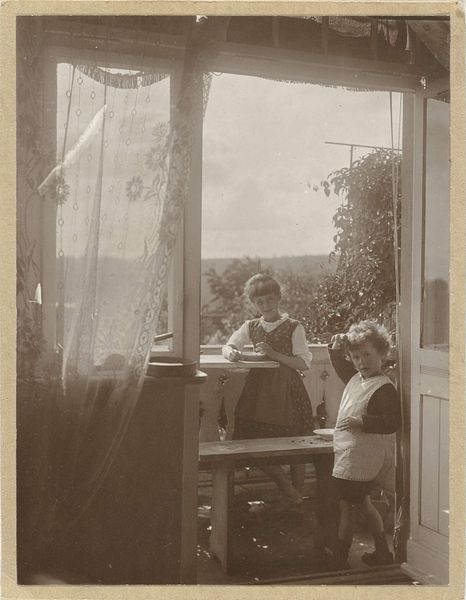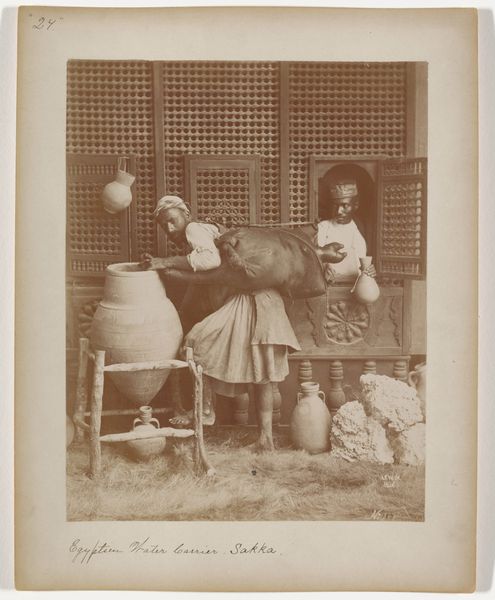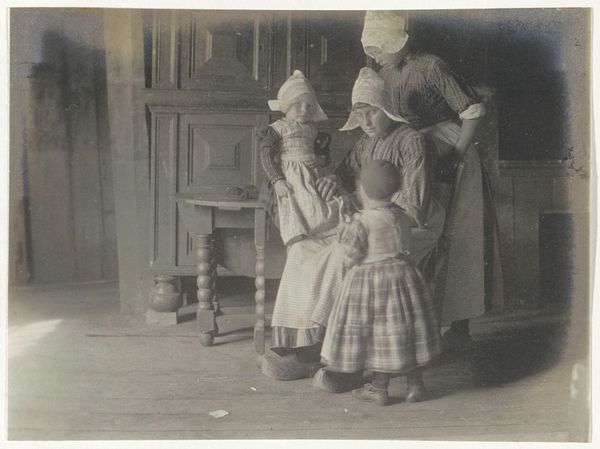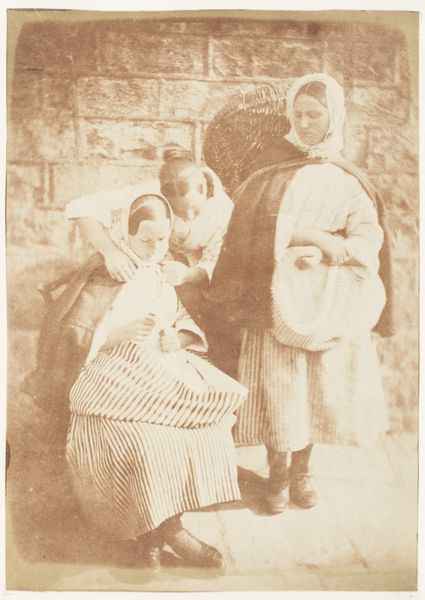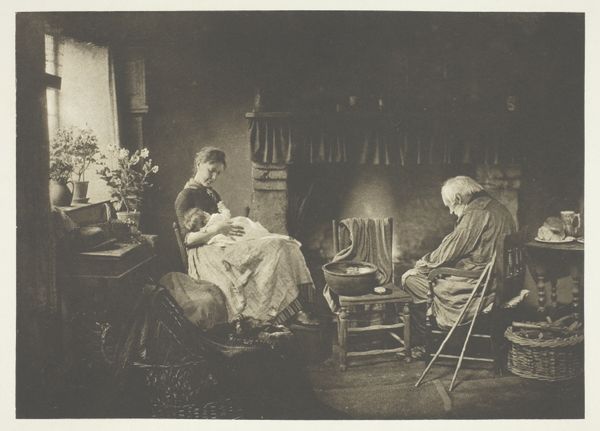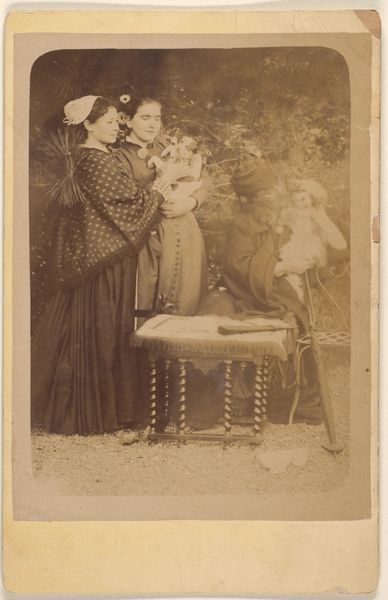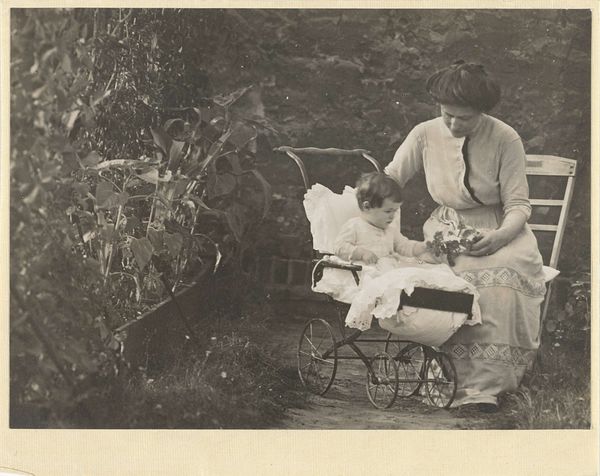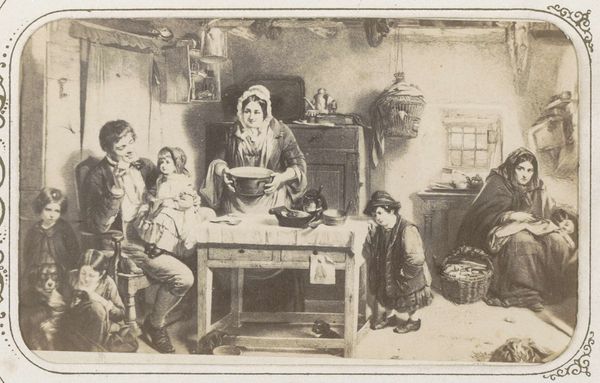
Marba en Eckart Titzenthaler, kinderen van de fotograaf, met een onbekende jonge vrouw (kindermeisje?) op het dakterras van het woonhuis in de Friedrichstrasse, Berlijn Possibly 1918
0:00
0:00
photography
#
portrait
#
pictorialism
#
archive photography
#
photography
#
historical photography
#
historical fashion
#
genre-painting
Dimensions: height 78 mm, width 99 mm, height 89 mm, width 102 mm
Copyright: Rijks Museum: Open Domain
Editor: Here we have a photograph by Waldemar Titzenthaler, possibly from 1918, titled "Marba en Eckart Titzenthaler, kinderen van de fotograaf, met een onbekende jonge vrouw (kindermeisje?) op het dakterras van het woonhuis in de Friedrichstrasse, Berlijn". The children and nanny seem caught in a very intimate moment. What details jump out at you? Curator: It's fascinating to consider the means of production of an image like this in 1918 Berlin. The Pictorialist style attempts to mimic painting through manipulation of the photographic process. We see this family engaging in domestic activities but the construction and material presence of the photo itself points to the photographer’s hand. He’s elevated an everyday scene by imbuing it with the trappings of “art.” Look at the backdrop. What are your thoughts? Editor: The backdrop almost feels like a stage set. I also notice the props: the children’s box, the book near the nanny. They contribute to this staged domestic scene. Curator: Exactly. What is most compelling is how the raw materiality of the photograph – its tones, grain, and even the slight imperfections – speak to the labor involved in its creation. How does this elevation through materiality and artifice affect your perception? Editor: It makes me question the authenticity of the image. Is it a true representation of their lives, or a constructed ideal? Also, knowing it was taken during a period of significant social upheaval in Germany adds another layer. Curator: Precisely. The image becomes a product of its time, reflecting not just a family portrait, but also the complex social and economic realities of a war-torn nation. What new insights about the work do you walk away with? Editor: I see it less as a simple snapshot and more as a crafted object that embodies both artistic intention and social context. I'll certainly look more at materiality and process when assessing photos going forward. Curator: Likewise, analyzing historical photos like these from a materialist perspective reveals them to be products of labor and careful artistic production, and less about a specific truthful instance. Thanks for discussing!
Comments
No comments
Be the first to comment and join the conversation on the ultimate creative platform.
